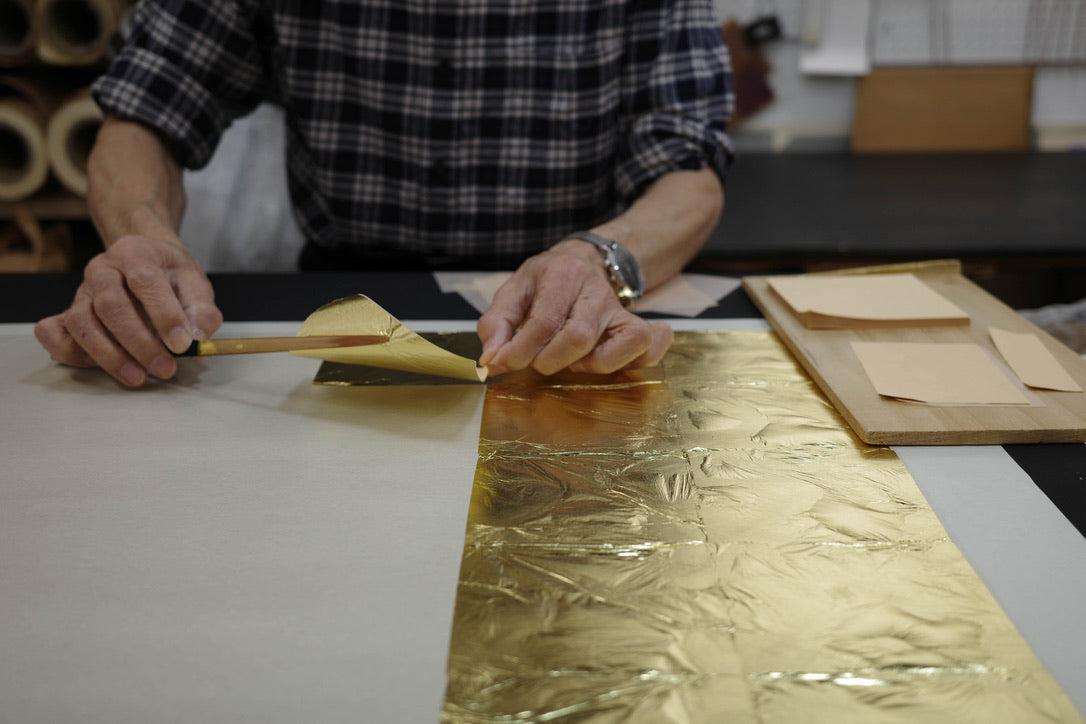





Gold thread earrings konjac
These earrings were reborn using scraps from making Ay’s clothes and gold thread from sAto . The gold thread, made from gold leaf used in kimonos, matches the meisen kimono fabric and adds an accent to your outfit.
[Konnyaku] When you think of Gunma, you think of konnyaku. A three-dimensional design with a konnyaku motif.
SIZE | height 2.5cm width 1.0cm
MATERIAL| Metal parts, Meisen kimono fabric (silk)
What is gold thread?
Gold thread made by cutting washi paper that has been pressed with gold leaf using lacquer as an adhesive.
The brightness of the gold leaf is subtly adjusted by the thinness of the lacquer,
The process is filled with craftsmanship, such as pressing the gold leaf, which is said to be 1/10,000mm thin, without any gaps. In addition, the lacquer, gold leaf, and washi paper themselves are made using techniques that have been passed down from generation to generation by Japanese craftsmen.
It was originally used in Nishijin-ori, Kyoto's finest textile, which has been handed down for 1,600 years, but due to the decline in demand for kimonos and the development of simpler production methods, traditional There are only a few craftsmen in the area who have inherited the manufacturing method.
What is Meisen?
The kimono was popular throughout Japan from the late Meiji period to the Showa period, and was loved by ordinary women as both casual and fashionable wear. The main production area for Meisen is the northern Kanto region. Kiryu, Ashikaga, Chichibu, Hachioji, and Isesaki. Isesaki Meisen, produced in Gunma Prefecture, where sericulture is said to have started in the Nara period, was produced in large quantities, and was worn by one in ten women in Japan at the time.
The charm of Isesaki Meisen is the unique pattern and good coloring created by the ``combined kasuri'' technique. Combined Kasuri is a technique in which colored patterns are not only applied to the warp threads, but also to the weft threads (printing), and the warp and weft threads are woven together one by one using a hand-held loom. However, although Meisen was once actively produced, the Meisen industry itself is currently in decline due to the shrinking of kimono culture and a lack of successors.
Kinshi- Made in Nishijin, Kyoto by Yuji Torihara
Kintsugi processing/Embroidery- Shibuya Atelier Fucca (Type B employment support facility) Atelier Fucca in Shibuya
design - sAto
Kimono fabric - Ay
Choose options






